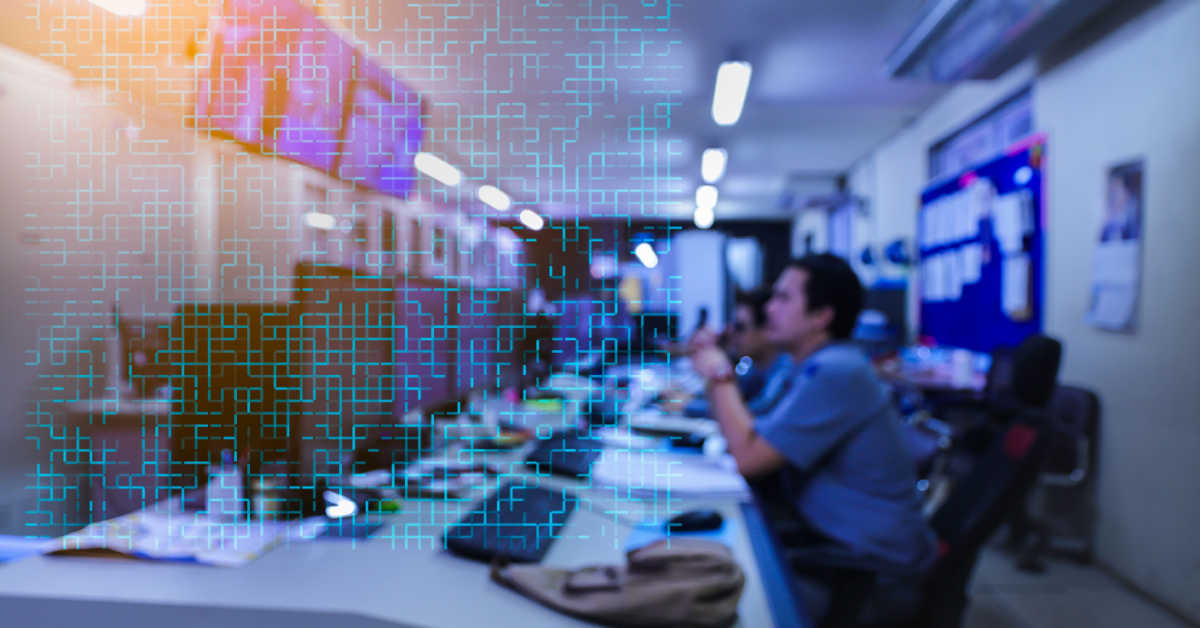In the modern world, new cyber threats emerge each day. Companies might struggle under the weight of too much responsibility when it comes to cybersecurity. Business growth is often put ahead of anything in for a company. This leaves companies open to several security issues. A security Operations Center (SOC) is a necessary part of any organization.
What Is a Security Operations Center (SOC)?
A Security Operations Center – or SOC – is the cyber hub of any organization. It is the team of experts that controls, monitors, and analyzes all the data that flows through your company’s network. This team can be outsourced teams or an in-house set of cybersecurity experts. The primary function of a Security Operations Center is naturally the security and protection of an organization. This group of professionals constantly examines every digital interface in the organization for cyber threats or vulnerabilities. This helps to maintain the protection of data, operations, and cybersecurity intelligence.
Security threats are caught in real-time by the Security Operations Center and dealt with immediately. The SOC provides a unified and coordinated defense for the company’s digital infrastructure.

Key Functions of a SOC
A Security Operations Center exists as the cyber intelligence center of an organization. This group is responsible for protecting endpoint devices, ensuring active threat hunting, and the overall safety of the network. Through the use of multiple tools and expertise, some of the primary functions of a SOC are:
Active Maintenance
The Security Operations Center is responsible for the upkeep of all the cybersecurity measures in place. This means that the team is meant to actively update software, apply security patches, and continuously maintain firewalls, blacklisting, whitelisting, and security policies. Cyber-attacks are usually successful as a result of bad security maintenance. This maintenance will ensure that vulnerable endpoints are secure, security platforms are performing efficiently, and all flaws in the system are found and fixed quickly.
Monitoring
A key function of any SOC is its ability to monitor activity 24/7. Active monitoring ensures better security for your network and an understanding of user activity. Security Information and Event Management (SIEM) solutions have been the core monitoring and detection base for most companies. However, with new and advanced cyber threats, SIEM solutions are simply not enough. A good SOC will make use of enhanced monitoring tools that include SIEM or an Endpoint Detection and Response platform. The adoption of Extended Detection and Response (XDR) or SOAR solutions is even better for an organization as they provide detailed telemetry and monitoring combined with automatic incident detection and response.
Inventory and Protection of Resources
The SOC needs to know exactly what assets need to be protected and which tools are needed to protect them. The SOC team needs entire network visibility to ensure that every endpoint and element of the digital infrastructure is accounted for and adequately secured.
Log Maintenance
The digital activity of a network should all be logged and recorded by the SOC. This helps the team in setting a baseline of what is normal and what should trigger an abnormal incident response. Logs also help the SOC in finding specific areas of weakness or activity after a cyber-attack. This helps to identify areas that need improving and can pinpoint the activity that set it off. The logged data should also be expertly interpreted and analyzed correctly to make decisions for better cybersecurity.
Compliance Management
The SOC has to ensure that all procedures and monitoring abide by the regulations established by the company itself, the government, and the industry. The GDPR, the PCI DSS, and HIPAA are just some regulatory boards that the SOC team needs to follow.
This compliance is assured by regular auditing and will improve client data safety. It also protects your company from legal and reputational damage. The SOC also has to ensure that the relevant authorities and clients are immediately made aware if any private data is breached.
Incident Response
Incident response refers to the immediate actions taken by the SOC team after a threat is found. The SOC is first responsible for isolating the threat actor and securing endpoints and applications. Thereafter, the infected files must be deleted and antivirus software must be run. The entire network needs to be isolated from the threat. The goal of an incident response plan is to ensure limited damage and maximum operation continuity.
Alert Ranking
The SOC is also responsible for ranking the cyber security incidents in terms of severity. This will help the team in prioritizing the more destructive threats – allowing them to allocate resources more efficiently.
Threat Intelligence Management
Preparation is a major part of a Security Operations Center. All members must stay up to date on the latest cyber threats and cyber-attacks taking place. Threat intelligence will ensure that the SOC is ready to face any type of malware, attack, or breach thrown at it.
Root Cause Investigation
This is a critical part of the incident response of the SOC. The team needs to find the root cause of an incident after it takes place. This is where the SOC will rely on its log monitoring and other collected data to establish what happened, where it happened, how it happened, and why it happened. This will help the team improve vulnerable areas and assess cyber hygiene and protocols in place.
Recovery and Remediation
After an incident takes place, the SOC team has to have a solid plan to restore operations quickly and recover any stolen data. The entire network needs to be cleaned and secured. Effective data backup and disaster recovery need to take place. This step also involves communicating with executives and discussing better cybersecurity options if need be.
Roles of Team Members in Your Security Operations Center
As we can see above, the members of a Security Operations Center are responsible for many things in an organization. From monitoring and incident response to remediation activities, compliance, and coordination – the SOC is a busy team. This is why it is essential to have an expert group that knows its roles. The SOC team can generally be divided as follows:
- SOC Manager: Naturally, every team needs a team leader. The SOC manager is in charge of delegating tasks, overseeing operations, and reporting to the Chief Information Security Officer,
- Security Engineers: These are the members that build and maintain the entire security infrastructure. These people work closely with developers and ensure that the organization makes use of the best technology available.
- Security Analysts: Security analysts are usually the first people to spot a cyber threat or incident. These members are responsible for detecting, investigating, and the general triage of a cyber-attack. The findings from these members will inform the SOC of the next steps to take to secure the network. This group is made up of both junior and senior SOC analysts, investigators, and incident responders.
- Threat Hunters: Threat hunting is an entire division in a SOC team. These members have unique skills in security analytics and penetration testing. Threat hunters can also work with both technical and non-technical teams to help an organization prevent cyber-attacks.
- Cyber Threat Intelligence (CTI) Manager: A cyber intelligence manager is exactly what it sounds like. This team member is responsible for collecting and curating useful cyber-threat information. They develop tools and strategies that can predict threats and support incident response.
Depending on the size of the company, the Security Operations Center might have a larger team that fulfills a lot more roles.

Sangfor Security Solutions
Creating an effective Security Operations Center for your organization is crucial. It is even more important to equip that team with the best cybersecurity solutions and platforms available. Sangfor Technologies is a leading cybersecurity and cloud computing brand that can enhance your SOC team. We understand the threats that are out there and we know how to keep your organization safe with our range of unique, integrated, and enhanced solutions:
- The Sangfor Cyber Command (NDR) Platform helps to monitor for malware, residual security events, and future potential compromises in your network and is coupled with an enhanced AI algorithm to keep you updated on any vulnerabilities or threats detected in the system.
- In addition, our advanced Endpoint Secure technology provides integrated protection against malware infections and APT breaches across your entire organization's network – all with ease of management, operation, and maintenance.
- Finally, Sangfor’s Incident Response service is geared towards flexible, fast, and effective elimination and prevention of cyber-attacks. The focus of incident response is locating and eradicating threats while implementing active disaster recovery and providing tailored analysis to help safeguard your company from future cyber-attacks.
- We also offer security assessment solutions to ensure your organization’s ability to recover from an incident. Sangfor also offers an array of advanced threat detection and response tools that can collaborate and coordinate with your Security Operations Center to ensure the best protection.
For more information on Sangfor’s cyber security and cloud computing solutions, visit www.sangfor.com.





